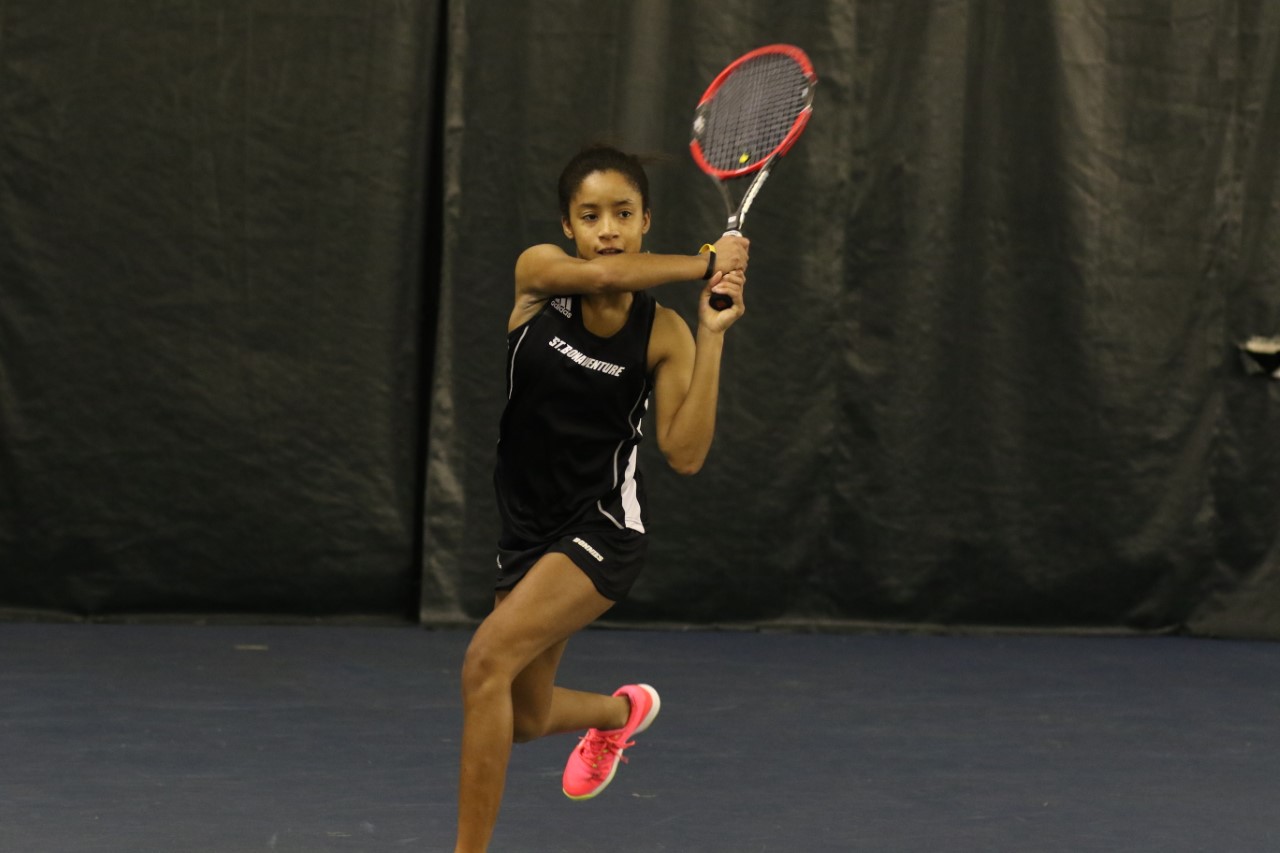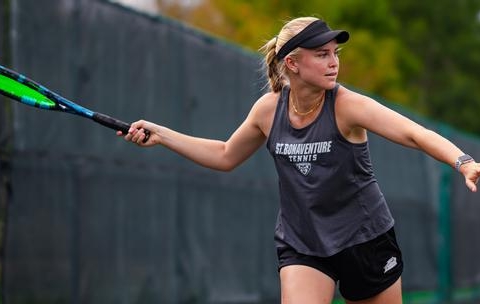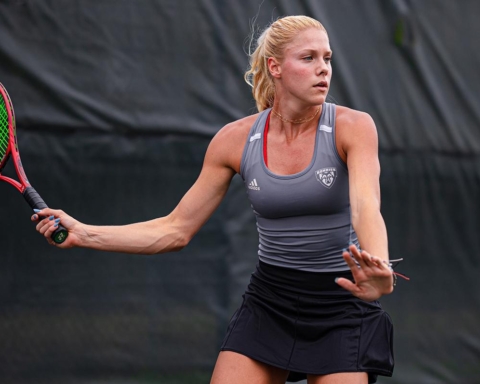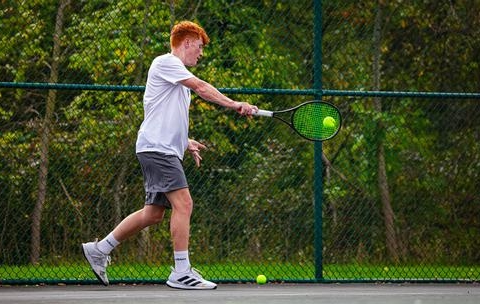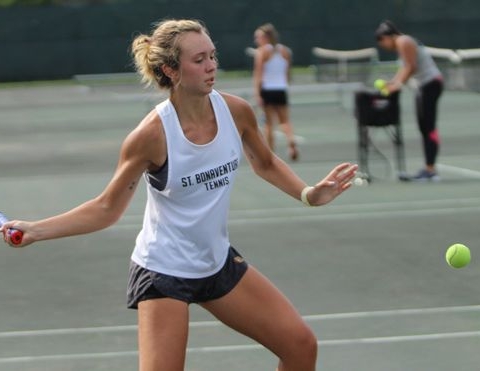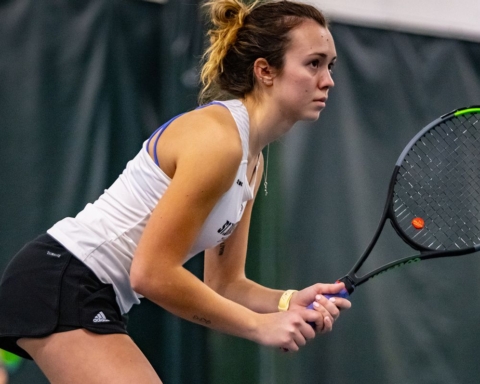By Emily Coughlin
Staff Writer
Members of the St. Bonaventure University men’s and women’s tennis teams must find their most compatible partner to create an effective doubles team.
When choosing doubles teams, Head Coach Michael Bates mixes and matches players to see which ones work best together to create three successful and competitive pairs.
Bates said he looks at which players are the strongest during doubles matches and splits them up between the three teams to create three scoring opportunities.
“We’re trying to find a combination between someone who can finish the point at the net and someone who has a pretty steady baseline,” said Bates.
So far in this season, the doubles teams are not consistent throughout matches because they are still figuring out which players have the best compatibility on the court and how the dynamic of the whole team can flow better with the doubles teams, said Bates.
Bates said he looks for teamwork during practice and different skill sets that can be helpful to each other.
“It’s still a work in progress and a learning process for [the players] right now,” said Bates.
Freshman John Rutkowski said he enjoys playing on a doubles team with different players because he gains different perspectives and new skills from each of his teammates. He clicks with his current partner freshman Guillermo Garcia because their skills complement each other, and they are also close off the court, which helps with their communication and understanding of each other on the court.
In order to be successful in a doubles match, you need to trust your teammate, which the players achieve by having a good relationship with them on and off the court, said freshman Kahlei Reisinger.
Rutkowski said there are differences between the relationship with a doubles partner during a match and outside of tennis, but the two aspects of the relationship build upon each other to create a strong friendship.
“On the court you have to be a lot more supportive, you have to pump up your partner and make sure he has his head focused, whereas off the court you can joke around a little more and be a little more relaxed,” said Rutkowski.
Reisinger said she never blames any of her doubles partners for a bad match because the outcome of the match is a team effort, and she always focuses on what she can work on to better help her teammate. She agrees that her relationships off the court are strong, but on the court, there is a more competitive view on how they interact.
“During the match we are more intense, we don’t get angry with each other, but we both love the sport and get upset with ourselves if we mess up, which sometimes causes tension,” said Reisinger.
Reisinger said the tension that happens on the court is sometimes helpful to strengthen how the team can work together, and the team discusses what they can do to be there for each other and work together.
Bates said doubles matches are different from singles matches because they are much quicker with only one set of six points instead of a singles match where the player has to win two out of three sets.
Rutkowski said when playing doubles matches he is much more concerned with how he plays, because a doubles match is a team sport, and his performance will affect his partner as well as himself.
In singles matches, if a player doesn’t play their best it is upsetting for them. But, during a doubles match, if a player doesn’t play well it is much more frustrating because they feel they let down their team, said Rutkowski.
“It’s a lot less of an individual sport, even though it is the same rules, you have to be a lot more cohesive with your partner than the other team is,” said Rutkowski.
Trust in your partner, compassion for the game, and compatibility on the court is what makes a doubles team successful and work well together, said Reisinger.
coughleg16@bonaventure.edu

